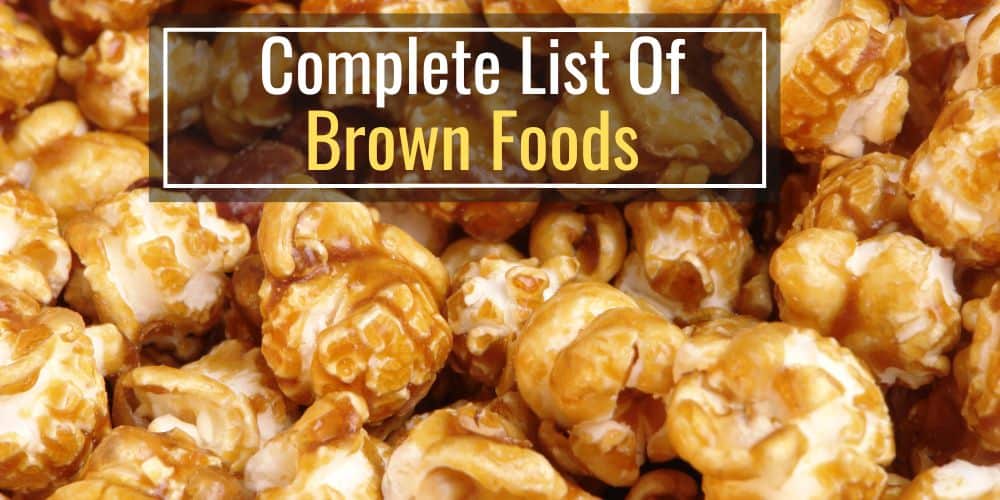Think about the last time you had something to eat. What did you have?
Odds are, it was something that was either brown or had a brown color to it.
Whether it’s bread and coffee or dark chocolate cake and brownies, these dishes always seem to tantalize your taste buds.
So if you’re looking to add some delicious and nutritious foods to your diet, consider something brown. You’ll be sure to love it.
Below you will find a list of brown foods in alphabetical order.
Here is a list of all the different food-colored lists with pictures if you’re looking for other colored foods:
1. Almonds
Starting off this list of brown foods with one of the most nutritious dry fruits ever known—almonds.

Almonds are nuts with an oval shape that develops inside a tough shell. Most likely cultivated there, almonds have their origins in western Asia and China.
Belonging to the P. Amygdalus species, almonds have a light beige brown hue and can taste somewhat sweet to bitter.
Almonds are a vital source of fiber, vitamin E, calcium, and riboflavin. Additionally, almonds also provide niacin, thiamine, folate, potassium, iron, and zinc.
Fact: Almonds are referenced in the Bible.
2. Almond Butter
But what if you’re not a fan of eating whole almonds? No problem! You can enjoy almond butter, which is a great alternative.
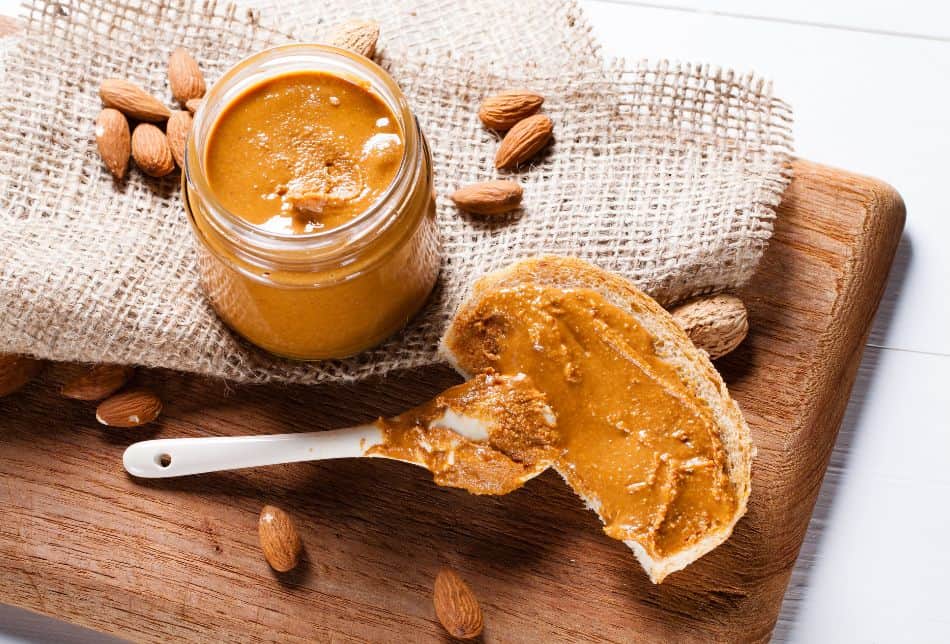
Almond butter is produced from grinding almonds into a paste. This nutty and rich spread can be used in various recipes or simply enjoyed on its own.
Kellogg’s almond butter is mentioned in the Journal of the American Medical Association from 1913. It was probably a John Harvey Kellogg product.
The color of almond butter is predominantly a member of the orange color family and is a blend of orange and brown. It’s an excellent phosphorus, potassium, sodium, zinc, and copper source.
3. Baked Beans
Baked beans are a classic favorite, especially in the United Kingdom and North America.
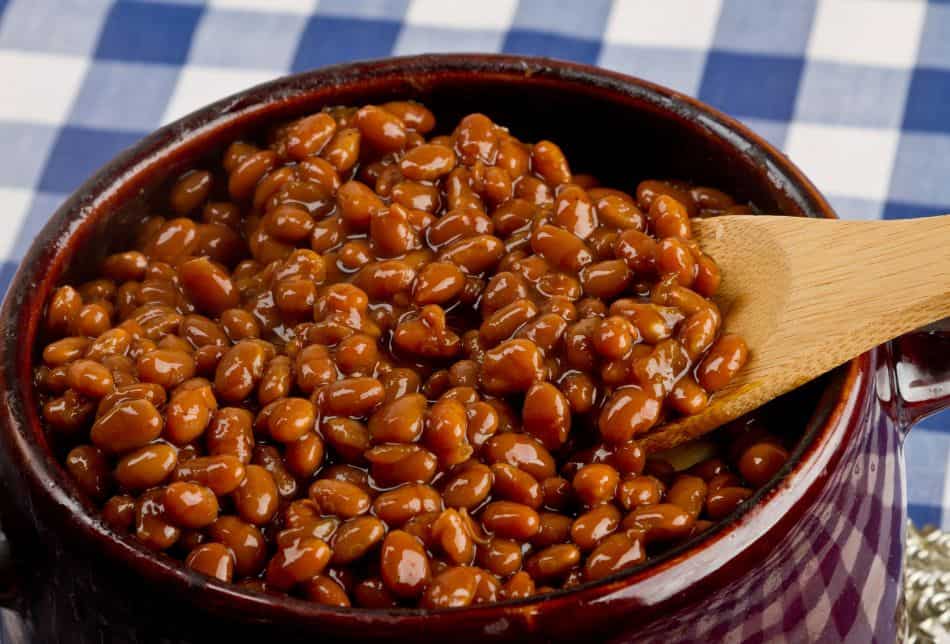
Baked beans are beans that have been cooked in a sauce. The sauce is usually made with tomatoes, molasses, sugar, and spices.
The beans that give baked beans their signature flavor are indigenous to America and originated in the United States.
The color of baked beans has a persimmon undertone and is a dark, muted ginger brown.
Baked beans are an exceptional source of protein, fiber, sodium, potassium, vitamins C, K, D, E, and thiamin.
4. Brown Bread
Brown bread is defined as bread made mostly from whole grains, typically wheat, and occasionally from dark-colored additives like molasses or coffee.
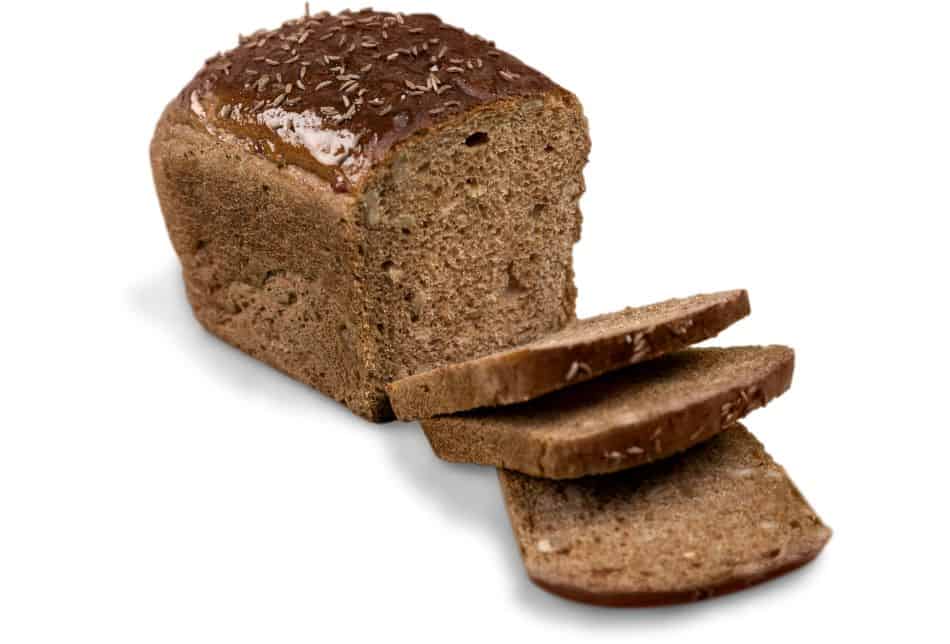
Believed to have been created at the end of the 19th century. The first reported consumption of brown bread was in Ireland, during the Famine, prior to 1848.
Brown bread is rich in vitamins B, K, and A. It also has essential minerals like zinc, iron, calcium, phosphorus, and magnesium.
Fact: The first loaf of bread was baked over 30,000 years ago.
5. Brown Egg
The next food on our list is a breakfast classic for a reason—they’re delicious, nutritious, and versatile.
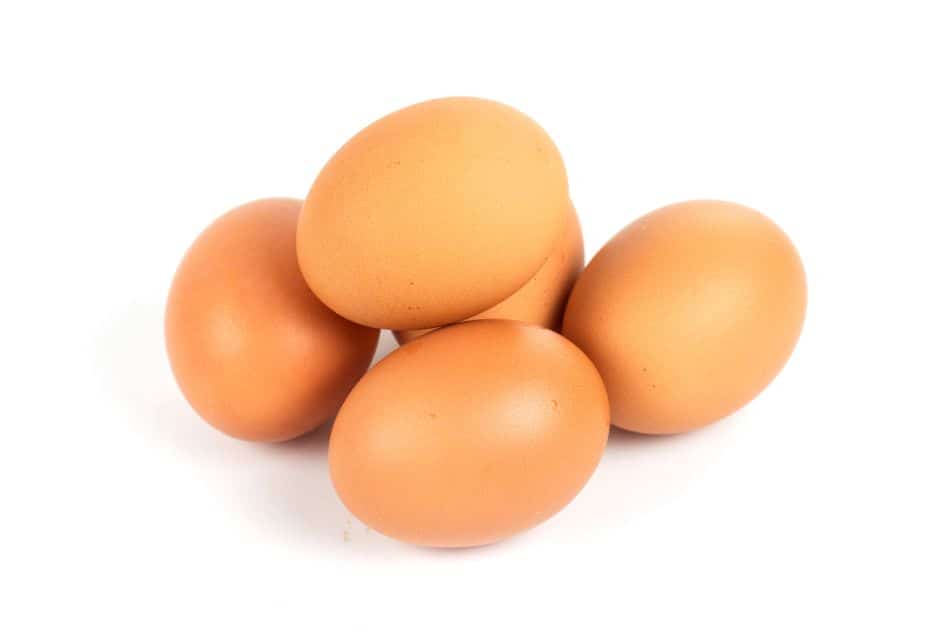
Brown eggs come from chickens with the same color of earlobes and feathers. The color of an egg’s shell is determined by the breed of chicken that lays it. Hence, the shell of a brown egg has a brown hue.
Brown eggs tend to be larger compared to white eggs. They are also more expensive than white eggs because brown-feathered chickens require more food.
Brown eggs are highly nutritious and contain vitamins A, B5, B12, B2, folate, phosphorus, selenium, and omega-3 fatty acids.
6. Brownies
Brownies are baked confections made with chocolate, eggs, butter, sugar, flour, salt, and vanilla extract. They are rich in protein and minerals like magnesium, phosphorus, and zinc.
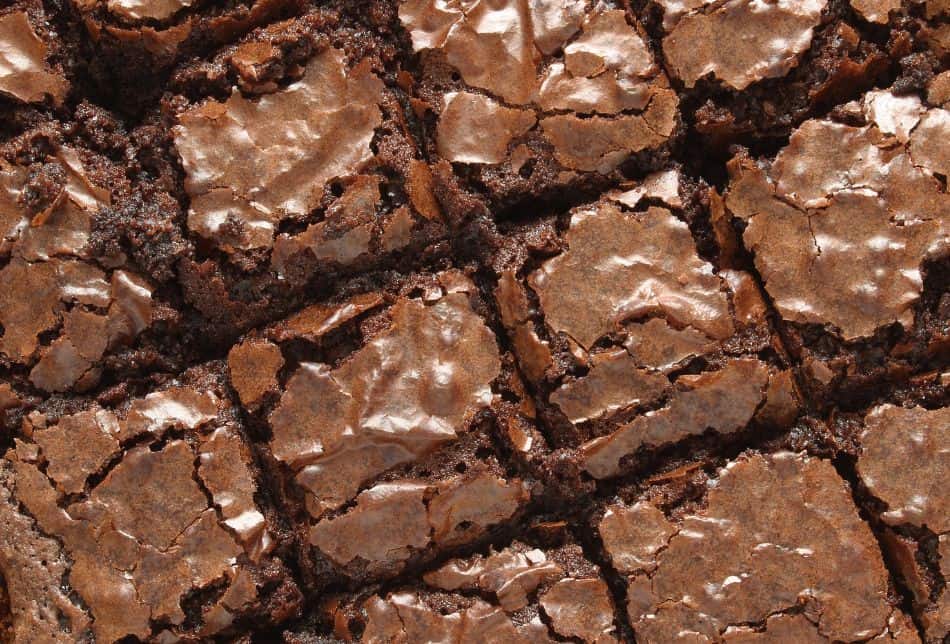
The first brownie was made in the United States in 1893 at the Palmer House Hotel in Chicago’s Loop.
Generally baked in a square or rectangular pan, brownies can be customized with a variety of toppings like frosting, nuts, and candy. They can be either cake-like or fudgy in texture.
Brownies are also a popular choice for school bake sales and potlucks because they travel well and can be easily cut into small squares.
7. Brown Mushrooms
Although classified as vegetables, this next food on our list belongs to the kingdom called fungi.
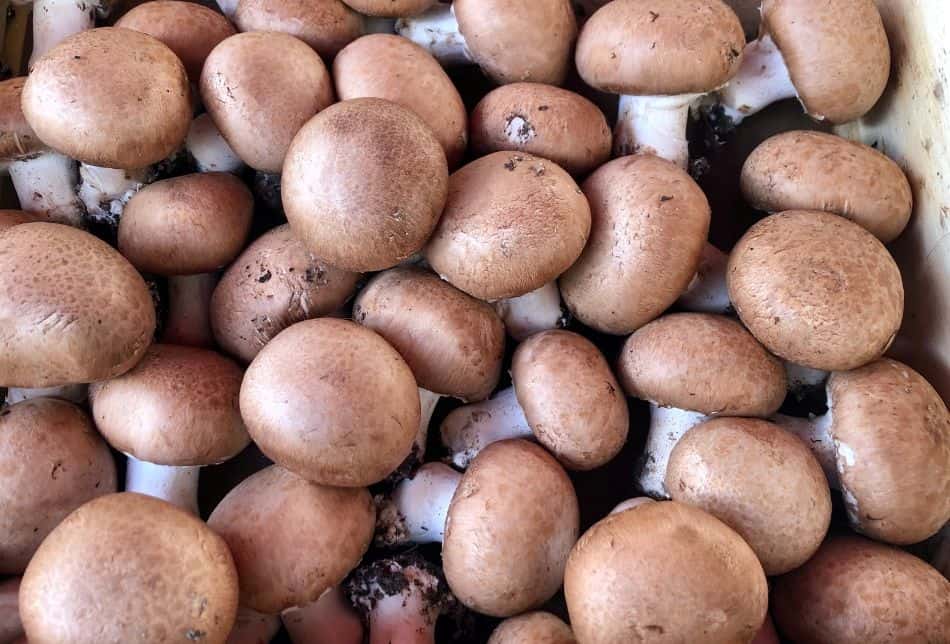
Botanically called Cremini, the brown mushroom belongs to the same variety of button mushrooms as the larger and more mature Portobello and carries a reddish brown color.
Native to North America and Europe. Brown mushrooms were first produced by farmers of Italian origin in southeastern Pennsylvania.
Additionally, they have edible stems, and their often fragile crowns taste nutty and earthy. Brown mushrooms are rich in vitamin B, such as niacin, pantothenic acid, and riboflavin.
8. Brown Rice
The sixth food item is highly associated with healthy eating. Brown rice is classified as whole grain rice that has been hulled and had its bran layer removed.
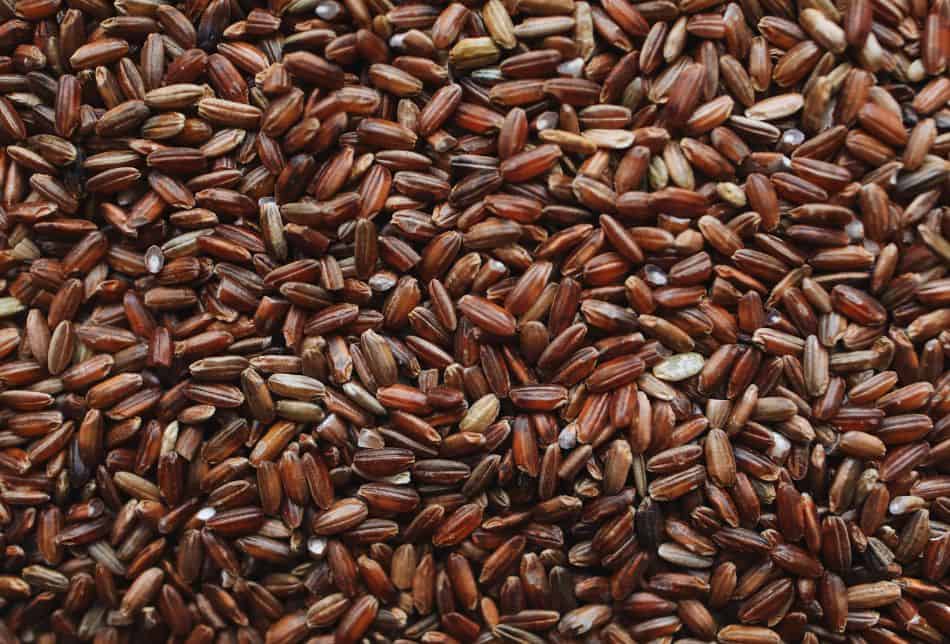
This process gives the rice a brown or tan color. Moreover, brown rice requires a longer cooking time than other types of rice.
Brown rice’s earthy, nutty flavor makes it a terrific foundation for curries, stir-fries, fried rice, and other dishes.
Brown rice is a nutritious food that is high in fiber and vitamins B1 and B6. It also contains minerals like calcium, iron, manganese, magnesium, phosphorus, and selenium.
Fact: Rice is the most consumed food in the world.
9. Brown Raisins
This next food item is a sweet and tangy treat.
Brown raisins are grapes that have been dried or dehydrated for around three weeks. As grapes dry, they get darker, giving them their dark brown color.
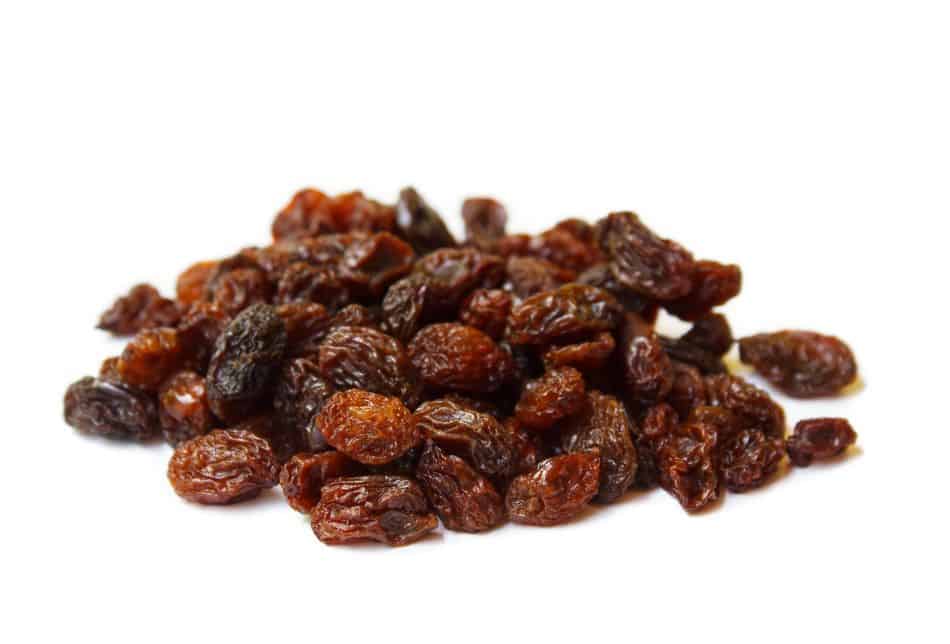
According to experts, the first raisins were found around 2000 BC, perhaps in ancient Persia or Egypt, when some grapes were inadvertently left out in the sun to dry.
Brown raisins are plump and chewy with a slightly tart flavor. They make a great addition to oatmeals and can also be combined with both sweet and savory dishes.
Brown raisins are a good source of fiber, vitamins C and K, and minerals such as potassium.
10. Brown Sugar
Documented as the earliest recorded sugar, brown sugar originated during the 1700s in the Caribbean.
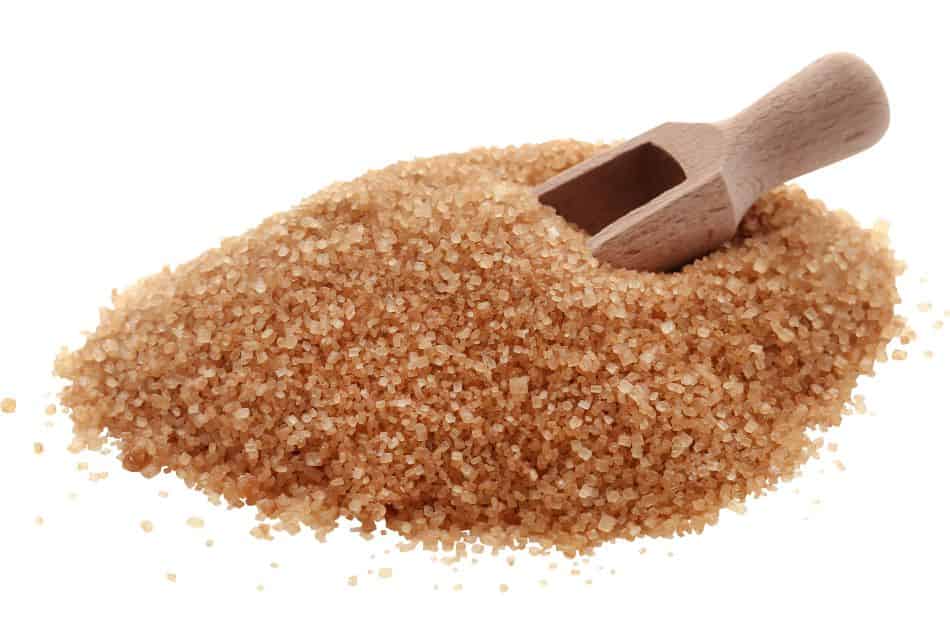
Brown sugar is acquired by adding molasses to white sugar. The molasses give brown sugar its characteristic brown color and deep, caramel flavor.
Brown sugar is highly used in baking recipes because it adds moisture and a deep, rich flavor to cakes, cookies, and other desserts.
Brown sugar has certain minerals since it contains molasses. These include potassium, copper, iron, and calcium.
11. Caramel Corn
A movie favorite, this sticky and delicious treat is a variety of popcorn that is coated in a caramel sauce.
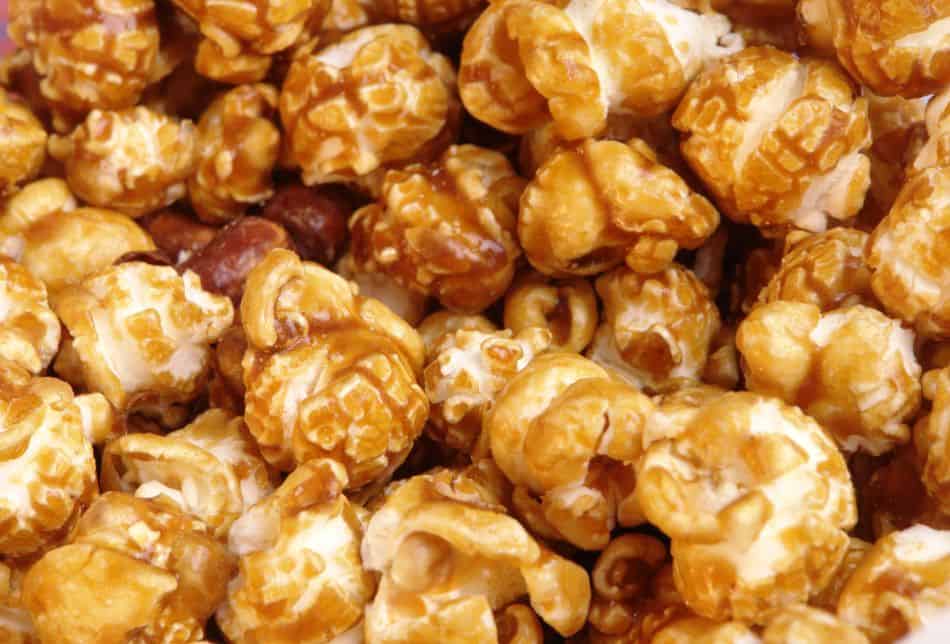
Corn and caramel have been combined since at least the 1890s. Two brothers, Frederick and Louis Rueckheim, are responsible for the invention of caramel popcorn.
Caramel popcorns are usually light to golden brown in color. The contrasts in caramel popcorns are numerous, thick on the outside, and light, fluffy, and airy inside.
They have a savory and sweet flavor to them.
It is a good source of vitamin C, carotenoids, lutein and zeaxanthin, sodium, potassium, and carbohydrates.
12. Caramel Pudding
A dessert made with ingredients including eggs, milk, sugar, and topped with caramel.
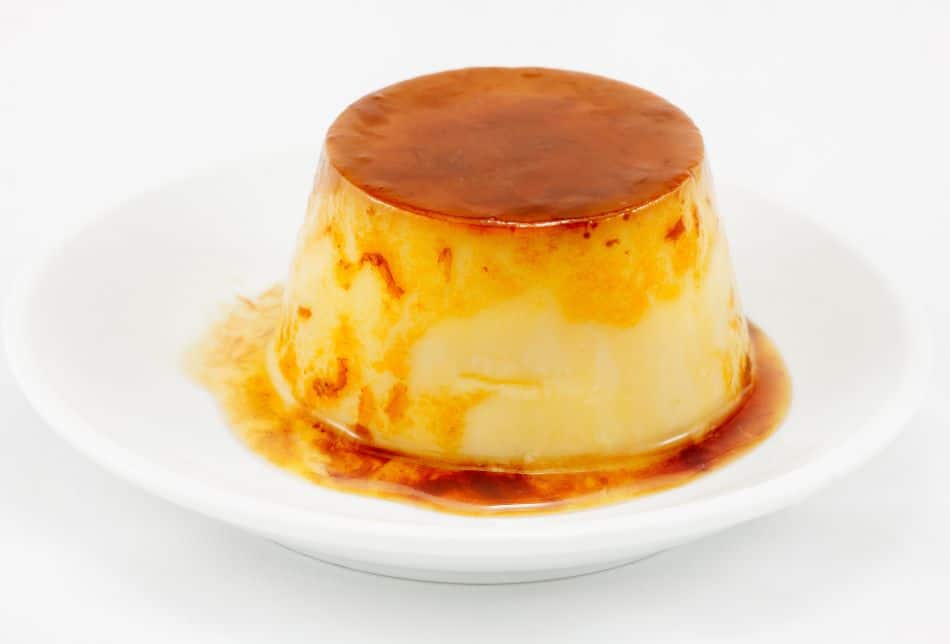
Also known as crème caramel, flan, or caramel custard, it originated in Europe. The Portuguese introduced caramel pudding for the first time in the 16th century.
This pudding is a pale yellow to golden brown with a smooth and creamy texture. The flavors can vary from being sweet, rich, and milky to tangy, depending on how the caramel is made.
Caramel pudding is an excellent source of potassium, carbohydrates, sodium, fatty acids, and amino acids.
Fact: National caramel custard day is observed on October 3.
13. Chestnuts
Belonging to the genus Castanea, the chestnut is a nut that grows on the chestnut tree, typically with a dark brown husk and light brown flesh.
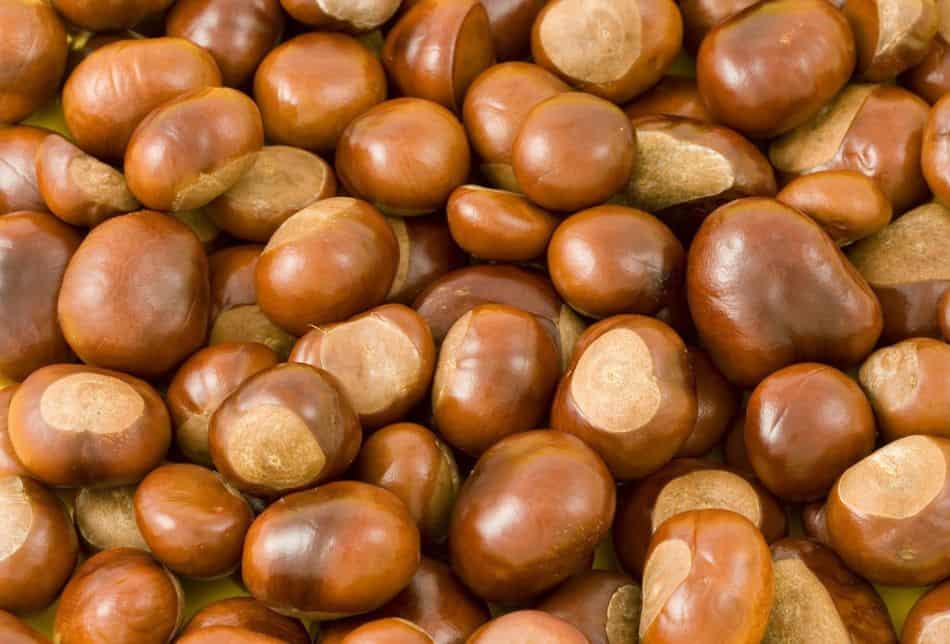
About 3,000 years ago, it was thought that the ancient Greeks were the first to cultivate chestnuts in the Mediterranean region.
Chestnuts are crisp and bitter while raw, but when roasted, they become sweet, buttery, and soft. They primarily carry nutrients like Vitamin C, E, A, B, calcium, magnesium, zinc, iron, copper, and manganese.
Chestnuts can be roasted, baked, or boiled and are often used in stuffing or as a component of soup.
14. Chickpeas
Chickpeas, popularly known as garbanzo beans, are a type of legume which are high in fiber, protein, manganese, and folate.
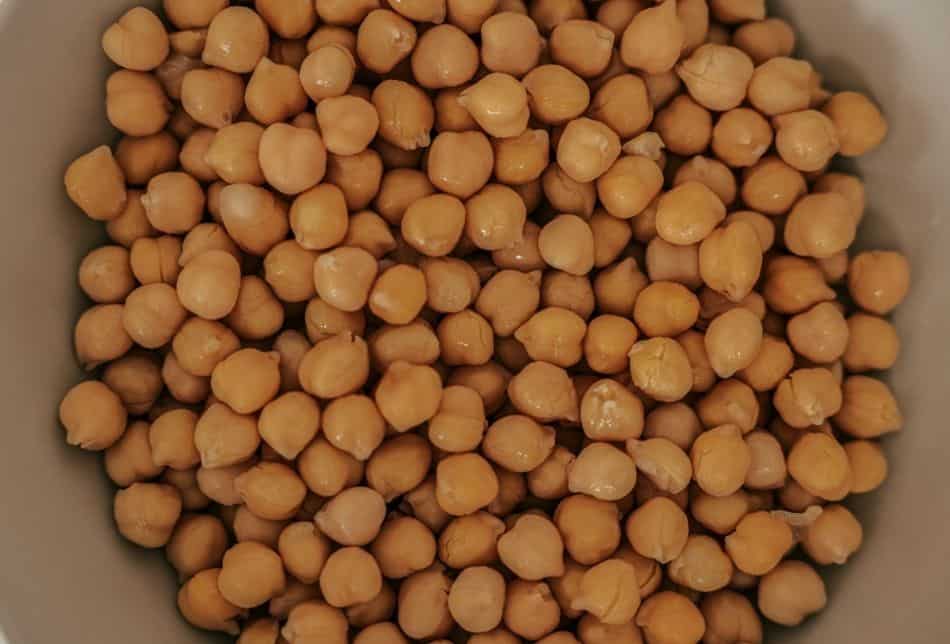
Native to the Mediterranean region, the origin of chickpeas dates back to Turkey around 3500 BCE. Chickpeas can be found in several dishes, including hummus, curries, and salads.
There are two main types of chickpeas, Kabuli and desi. Kabuli chickpeas are larger and have a creamier texture, while desi chickpeas are smaller and have a nuttier flavor.
The most typical chickpea color is tan or beige. However, they can also be found in yellow, red, dark green, and brown.
Fact: Chickpeas were one of the first-ever legumes to be planted.
15. Chocolate
One of the most liked flavors in the world—chocolate is a sweet, creamy food made from cocoa beans.

Chocolates have a colorful history that dates back to ancient Mesoamerica, now known as Mexico, around 4,000-year ago.
Chocolate is produced from the roasted seeds of Theobroma cacao, a tropical tree native to Central and South America.
The seeds are ground into a fine paste, which is then mixed with milk, sugar, and other ingredients to create chocolate.
It is made in the form of a liquid, paste, or in block and used as a flavoring ingredient in many foods. Chocolates are high in flavanols, polyphenols, and theobromine.
Fact: Theobroma cacao translates to “food of the gods” in Greek.
16. Chocolate Cake
The universal dessert favorite, chocolate cake, gets its name and signature flavor from the addition of chocolate to the cake batter.

Chocolate cake can be either light and fluffy or dense and fudgy in texture.
The earliest known chocolate cake recipe was published in 1847 by Eliza Leslie, an author who published the cookbook “The Lady’s Receipt Book.”
The color of the baked cake will depend on the type of cocoa powder used. Brown cocoa powder will give the cake a light to dark brown color.
The chocolate cake contains some nutrients such as sodium, carbohydrates, potassium, and dietary fiber.
17. Chocolate Ice Cream
The second most consumed flavor of ice cream after vanilla is chocolate.
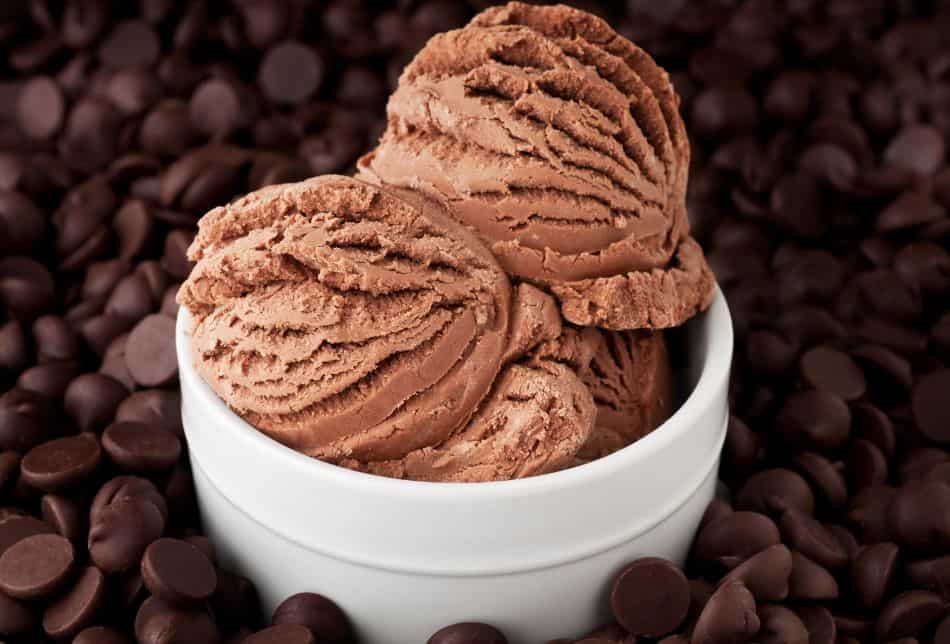
The very first recipes for frozen chocolate were printed in Naples, Italy, in 1693.
The usual ingredients for ice cream—cream, sugar, vanilla, and eggs—are combined with cocoa powder to create chocolate ice cream.
Chocolate ice cream usually has a dark brown color. It contains some nutrients such as sodium, carbohydrates, and dietary fibers.
Fact: As ordinary liquids like hot chocolate, coffee, and tea were the first foods to be transformed into frozen treats, chocolate was one of the original ice cream flavors, developed before vanilla.
18. Cinnamon
Cinnamon is a spice made from the inner bark of Cinnamomum trees, which are native to the Caribbean, Sri Lanka, South America, and Southeast Asia.

Warm, brownish-orange in color, cinnamon has a sweet, woodsy flavor coupled with a mild lemony note and a spicy aftertaste.
First discovered around 2800 BC, cinnamon pairs well with sweet and savory dishes alike. Cinnamon is a common ingredient in baking, as well as in curries, stews, and other savory dishes.
Cinnamon is also used to flavor beverages like coffee, tea, and hot chocolate.
It is a good source of vitamin A, potassium, magnesium, and calcium.
19. Coffee Beans
Coffee beans are the seeds acquired from the coffee plant, which is native to Ethiopia. They are used to make coffee, one of the most popular beverages in the world.
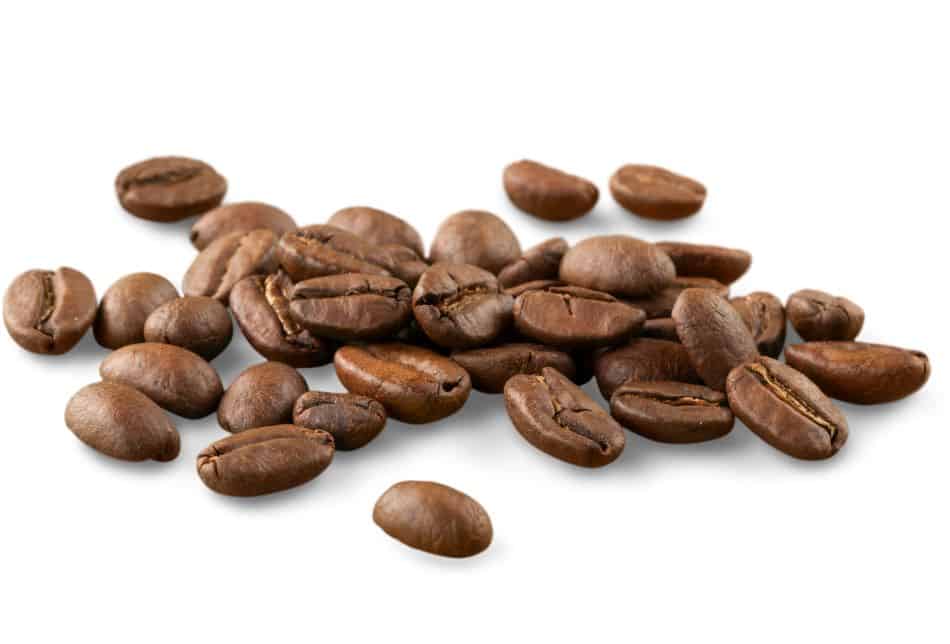
Coffee beans are small and have a flattened shape. They have a bitter taste when eaten raw but become less bitter after they are roasted.
Coffee beans are green when they are unroasted. However, roasted beans can be any shade from light brown to black.
Coffee beans include nutrients like magnesium, potassium, calcium, iron, thiamin, riboflavin, niacin, phosphorus, and zinc.
20. Cookies
A cookie is a small, flat, sweet baked treat that comes in wide varieties. The word “cookie” is derived from the Dutch word “koekje,” which means “little cake.”

Cookies were first made in Persia around the 7th century. The most common type of cookie is the chocolate chip cookie, which was invented by Ruth Graves Wakefield in 1938.
Chocolate chip cookies are small, round, flat, and have chocolate chips embedded in them.
They are mostly light to dark brown in color.
Cookies provide nutrients like carbohydrates, fiber, sodium, and protein.
Fact: The largest chocolate chip cookie in the world weighed more than 40,000 pounds.
21. Cooked Meat
The color of cooked meat shifts from red to pink to brown. If the meat is already brown, cooking will not alter its color.
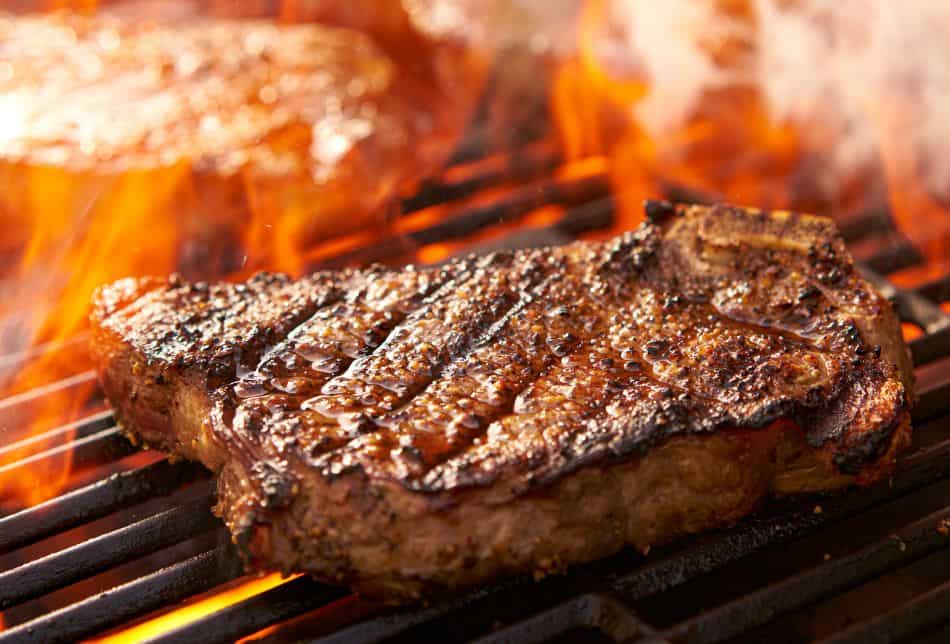
Cooking meat helps to kill bacteria and other harmful microorganisms that may cause food poisoning.
There are numerous ways to cook meat, such as baking, grilling, frying, and boiling. The type of cooking method used affects the flavor, texture, and nutrition of the final product.
Cooked meat is a good source of protein, carbohydrates, vitamin B12, B3 (niacin), zinc, and selenium.
Fact: About 800,000 years ago, the oldest definite evidence of people cooking food was discovered.
22. Dates
Dates, which are derived from the Phoenix palm species, are fresh stone fruit. They are considered the oldest cultivated fruit in the world.

Generally used as an alternative to refined sugar, dates are either golden yellow or reddish-brown in color. Its flesh is tender and sweet and also contains an elongated stone with a longitudinal groove.
Dates were initially known to be grown in the Fertile Crescent, which connected Egypt and Mesopotamia, as early as 4000 BC.
Dates are an incredible source of vitamin B6, fiber, potassium, iron, magnesium, flavonoids, carotenoids, and phenolic acid.
They come in different varieties, including Medjool, Deglet Noor, Barhi, and Zahidi.
23. Fenugreek Seeds
One of the frequently used spices used in Indian cooking—fenugreek seeds, have a nutty, sweet, slightly bitter taste and are angular, tough, and yellowish brown in color.
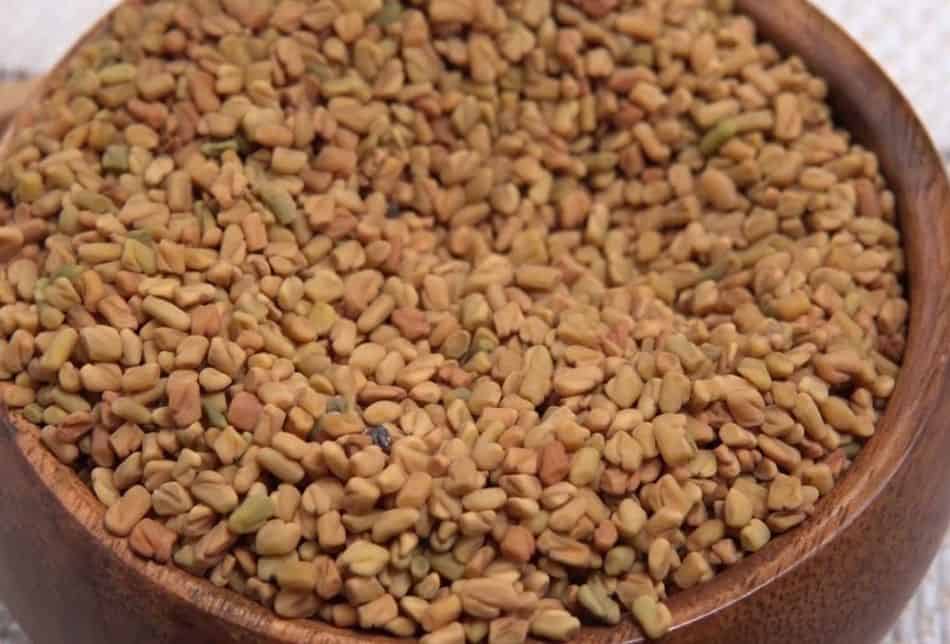
Fenugreek seed is native to southern Europe and the Mediterranean region and has been used since ancient times. This spice, according to archaeologists, was utilized as early as 4000 BC.
Fenugreek seed contains vitamins A, B1, B2, C, iron, pantothenate, nicotinic acid, calcium, pyridoxine, manganese, and biotin in abundance.
Toasting the seeds before use can help to enhance their flavor. Fenugreek leaves are also edible and are used in salads, stews, and curries.
24. Flaxseeds
Moving on to another brown food item which is neither a fruit nor a vegetable but a seed, namely flaxseed.
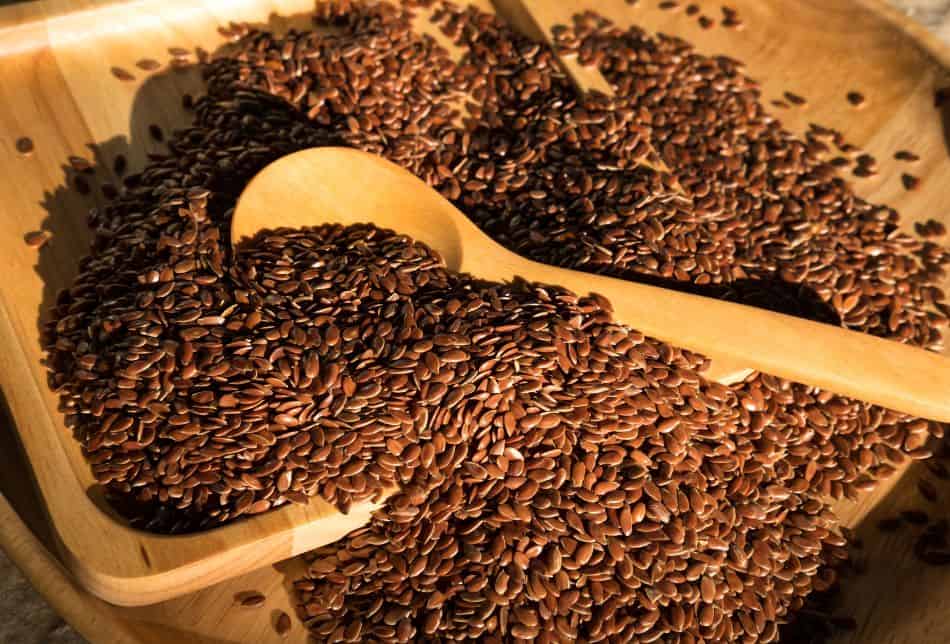
Flaxseeds are the small, brown seeds of the flax plant Linum usitatissimum. They carry a nutty flavor and are often used as an alternative to eggs in baking.
The seeds are native to West Asia and the Mediterranean coastal lands. They were first cultivated in Babylon around 3000 BC.
Flax seed is high in manganese, magnesium, phosphorus, copper, vitamin B1, fiber, and omega-3 fatty acids.
Consider toasting, cooking, or baking the flaxseed before consuming it because it contains toxins when consumed raw.
25. Fudge
A type of candy made with sugar, milk or cream, butter, and flavorings. Fudge is smooth and creamy in texture with a dense consistency.
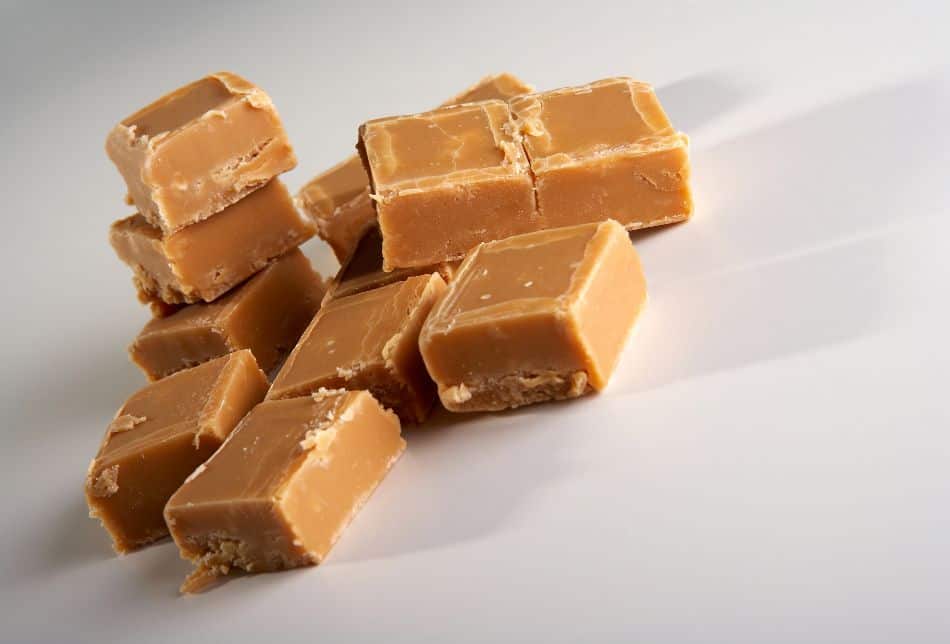
The first known recipe for fudge was published in 1886 by a chocolate maker from Baltimore, Maryland.
However, a student at Vassar College, New York, by the name of Emelyn Battersby Hartridge, wrote the first piece of writing to make reference to fudge.
Fudge has a persimmon undertone and is a deep, neutral, ginger brown. Fudge is a source of vital nutrients such as iron, vitamin A, calcium, and potassium.
Fact: National Fudge Day is celebrated on June 16th.
26. Ginger
The next food is ginger which is of the Zingiber officinale genus.

Ginger is a root with an earthy, spicy, pungent aroma with a hint of sweetness. The flesh that lies beneath the skin is solid, fibrous, and can be either yellow or brown in hue.
Ginger packs a powerful punch of vitamins and minerals like vitamin C, B3, B6, magnesium, niacin, zinc, folate, and potassium.
You can add ginger on top of your salad, chicken, or seafood as a garnish or consume candied ginger as a snack. Furthermore, have it as a condiment, typically pickled ginger.
The origins of ginger, which are most likely in Southeast Asia, go back roughly 5000 years.
27. Hazelnuts
Hazelnuts are the edible nuts of the Corylus avellana tree.
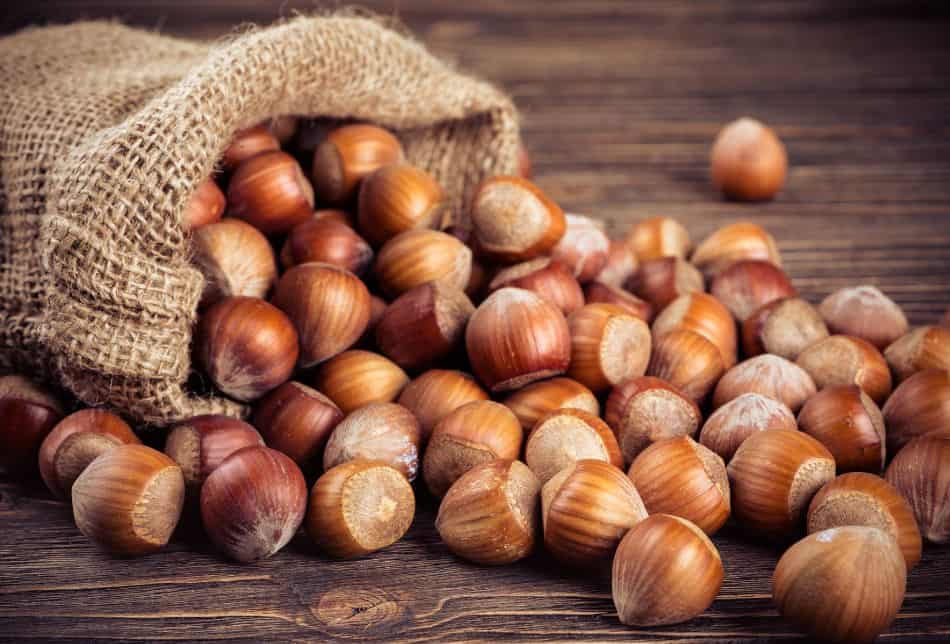
Also known as cobnuts or filberts, they have a smooth, brown exterior and a creamy, white interior. Hazelnuts have a slightly sweet, toasty, and nutty flavor with hints of chocolate.
Hazelnuts are packed with nutrients like vitamin E, B6, thiamin, magnesium, folate, manganese, copper, and phosphorus.
Hazelnuts can be eaten whole, chopped, roasted, or ground into flour. They are commonly used in baking cookies, biscotti, and tarts and as a topping for desserts like ice cream and cakes.
Hazelnuts were initially cultivated in China in 2838 BC and come from Asia Minor.
28. Lentils
The next addition is lentils.
Known for its lens-shaped seeds and commonly referred to as pulses, lentils are a type of plant called a legume.
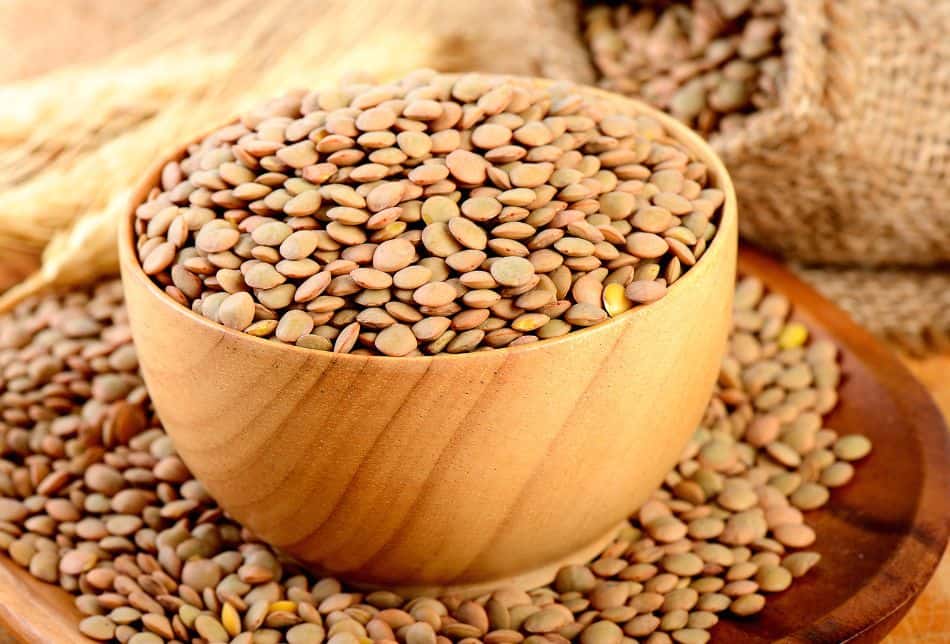
Native to Western Asia and North America, lentils first became domesticated around 8000 BC. They typically have a moderate, earthy flavor and can range in hue from khaki-brown to dark black.
Lentils are primarily low in saturated fat and sodium and high in fiber, folate, potassium, vitamin A, thiamin, β-carotene, and plant chemicals called polyphenols.
Fact: Lens culinaris, the scientific name for lentils, refers to the seed’s curved lens-like form.
29. Maple Syrup
Maple syrup is obtained from the xylem sap of maple trees. It is a sweetener with a pale golden to dark brown color.
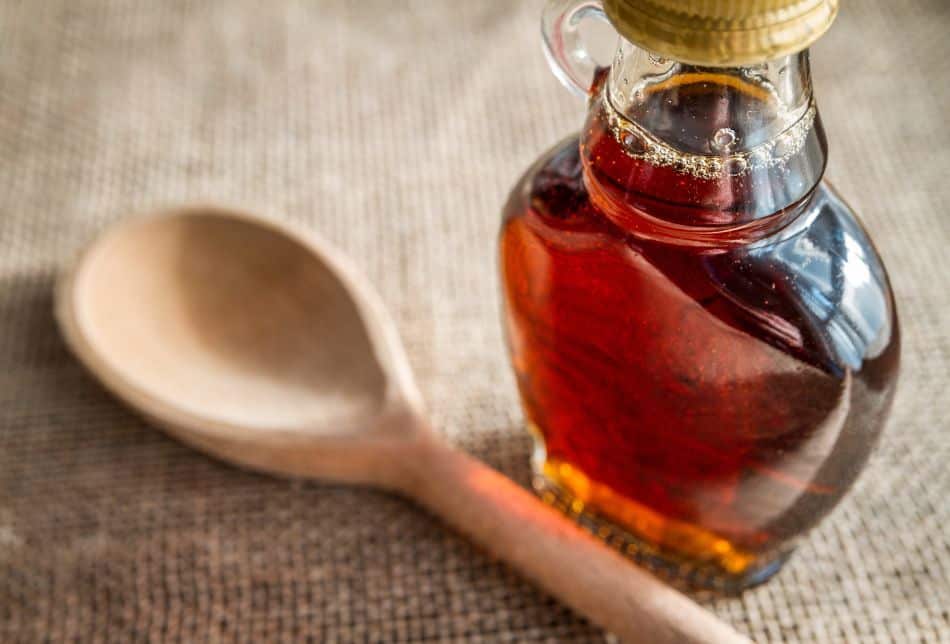
Maple syrup can be used in baking, cooking, and as a topping for pancakes, waffles, oatmeal, and yogurt.
Maple syrup was first produced by the indigenous people of North America. It is an excellent source of manganese, zinc, and iron. Additionally, it also contains calcium and potassium.
Fact: Quebec, Canada, is the largest producer of maple syrup in the world.
30. Molasses
Molasses is a thick, dark brown syrup that is a by-product of the sugarcane refining process.
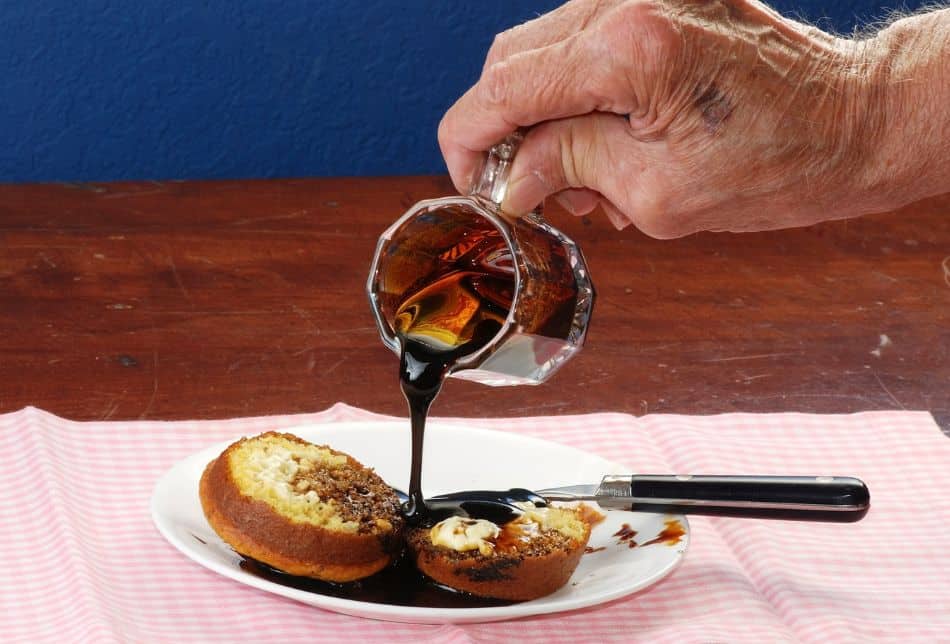
It has a warm, sweet, somewhat smoky flavor. Molasses can be used in baking, cooking, smoothies, sauces, and dressings. Additionally, it can act as a sweetener for coffee and tea.
The earliest known use of molasses dates back to 500 BCE when it was mentioned in Indian texts.
Molasses is abundant in iron, calcium, magnesium, and potassium. It also contains vitamin B6, manganese, and selenium.
Fact: Blackstrap molasses has more potassium than any other food, more calcium than milk, and more iron than eggs.
31. Molasses Cookies
After molasses now, we have molasses cookies which are brown, chewy, and deliciously spiced.
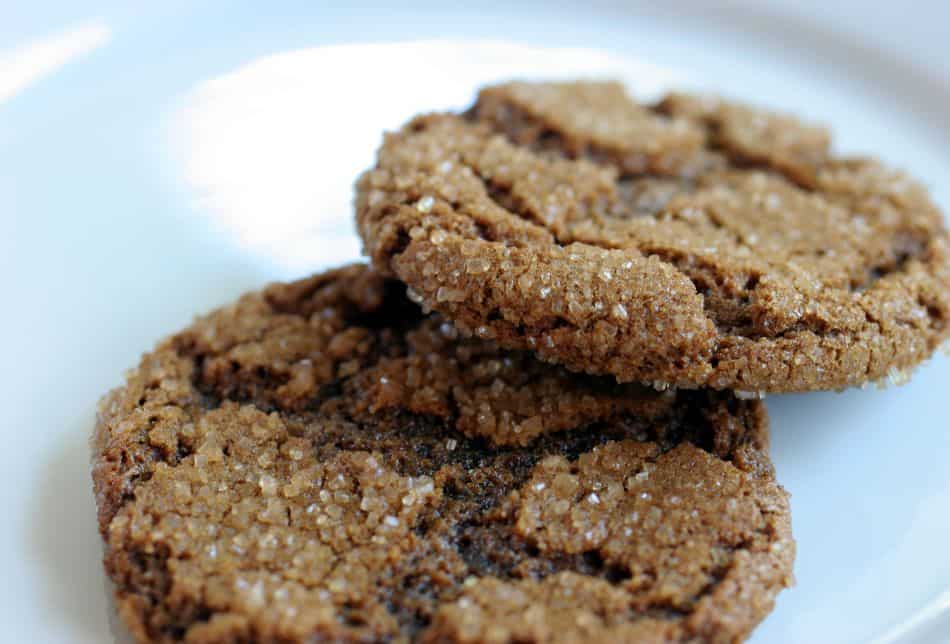
Molasses cookies are made with molasses, flour, butter, eggs, baking soda, brown sugar, cinnamon, ginger, cloves, nutmeg, and allspice. They are often iced or garnished with white sugar.
The first recorded recipe for molasses cookies dates back to 1884 by a woman named Mrs. Lincoln. The cookies were likely inspired by English gingerbread treats.
They contain some essential nutrients like sodium, carbohydrate, fiber, protein, and potassium.
32. Peanut Butter
John Harvey Kellogg invented peanut butter for the first time in 1895.
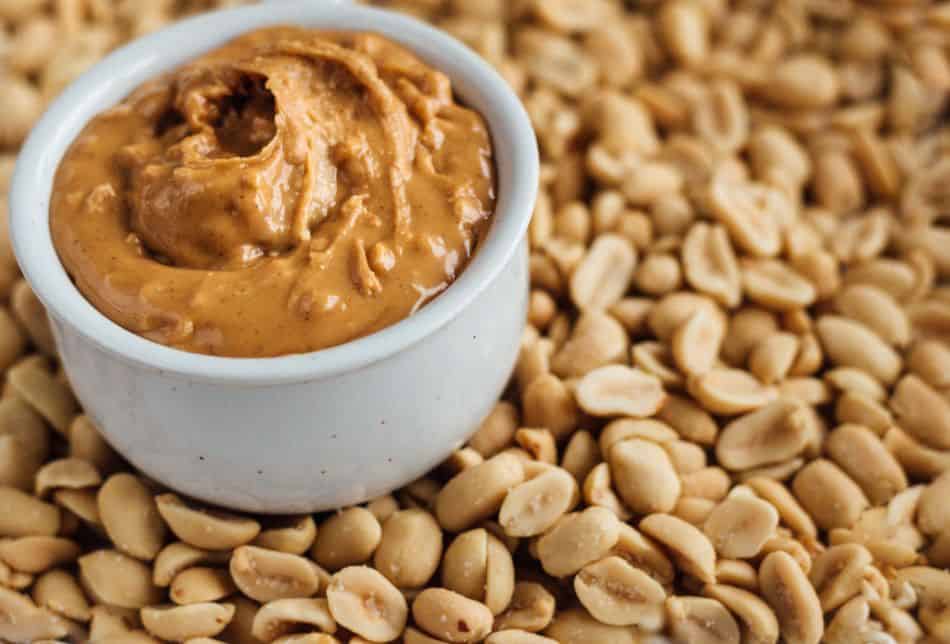
It is a thick, pasty food made by grinding roasted peanuts until they turn into a smooth paste. It is usually sold in jars and can be either crunchy or smooth in texture.
Peanut butter has a sweet and nutty flavor.
Peanut butter can be taken as it is or used as a spread on toast, sandwiches, and banana slices.
It is high in vitamin E, niacin, manganese, vitamin B6, magnesium, oleic acid, and copper.
Fact: Peanut butter was first made familiar to the US at the St. Louis World’s Fair in 1904.
33. Pecan
Pecans are the edible seeds of the Carya illinoinensis tree.
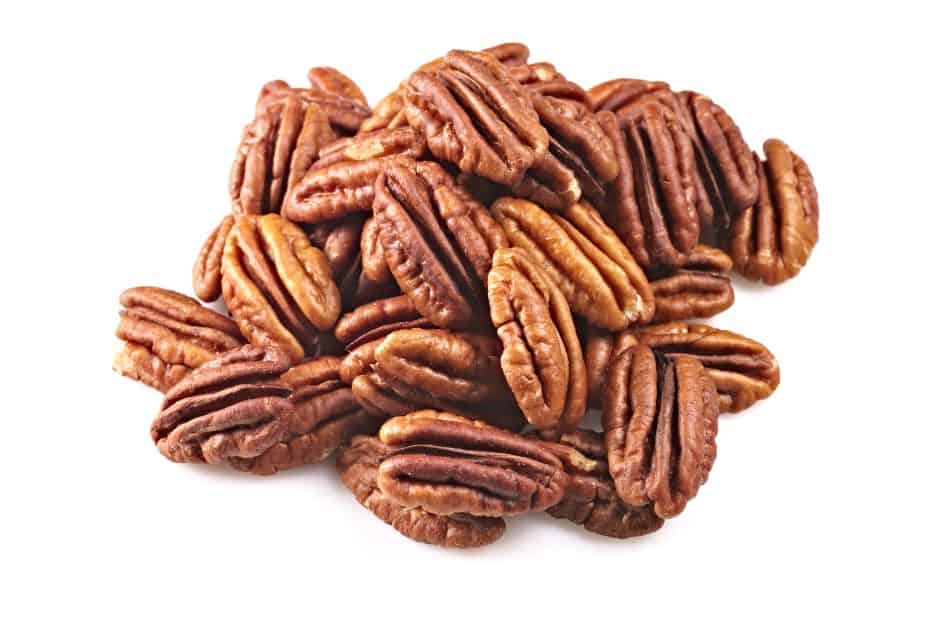
They are smooth, pinkish-brown nuts with a shape akin to a walnut. The nut’s exterior has a mild bitterness, while its interior is filled with sweet, buttery, nearly fatty flesh.
Pecans are native to south-central North America and were first introduced to the Europeans in the 16th century.
Numerous vital nutrients can be found in abundance in pecans. They are a good source of fiber in particular, as well as copper, manganese, thiamine, and zinc.
Pecans can be eaten on their own as a snack or used in baking and cooking.
34. Potatoes
A favorite cult vegetable, potatoes are the tuberous roots of the Solanum tuberosum plant.
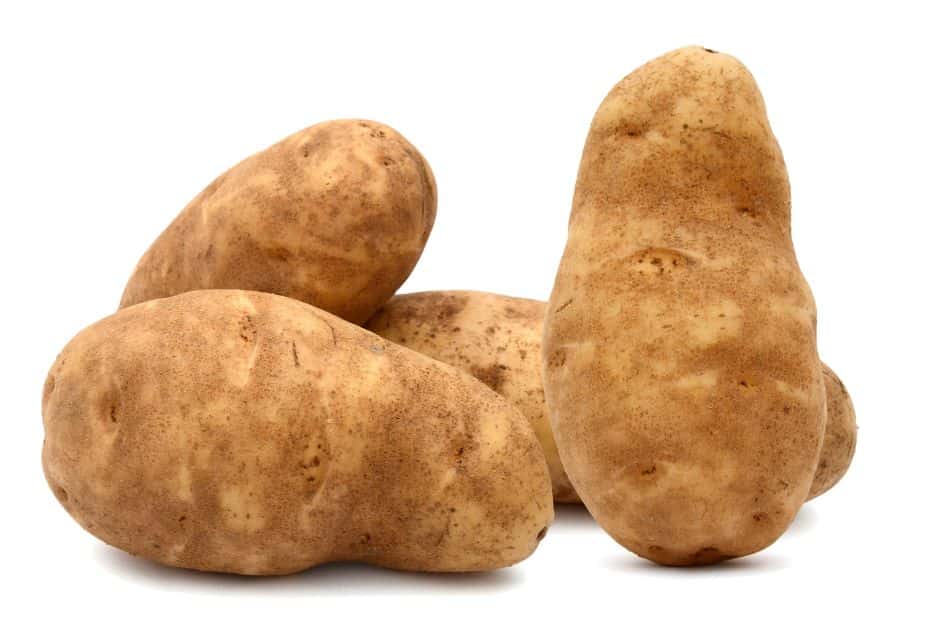
Potatoes come in numerous shapes, sizes, and colors, with the most common being brown, red, white, and yellow. They have a starchy texture and a subtle sweet flavor.
Potatoes are indigenous to the Andes in Peru and Bolivia. Around 8,000 BC to 5,000 BC, the Inca Indians of Peru were the first to produce them.
Potatoes are high in vitamins C, B6, folate, and potassium. They are also a good source of chlorogenic acid, catechin, lutein, and glycoalkaloids.
Fact: Potato is derived from the Spanish word “Patata.”
35. Pretzels
Pretzels are a popular snack food consisting of twisted, knot-like dough boiled in salt water and then baked.
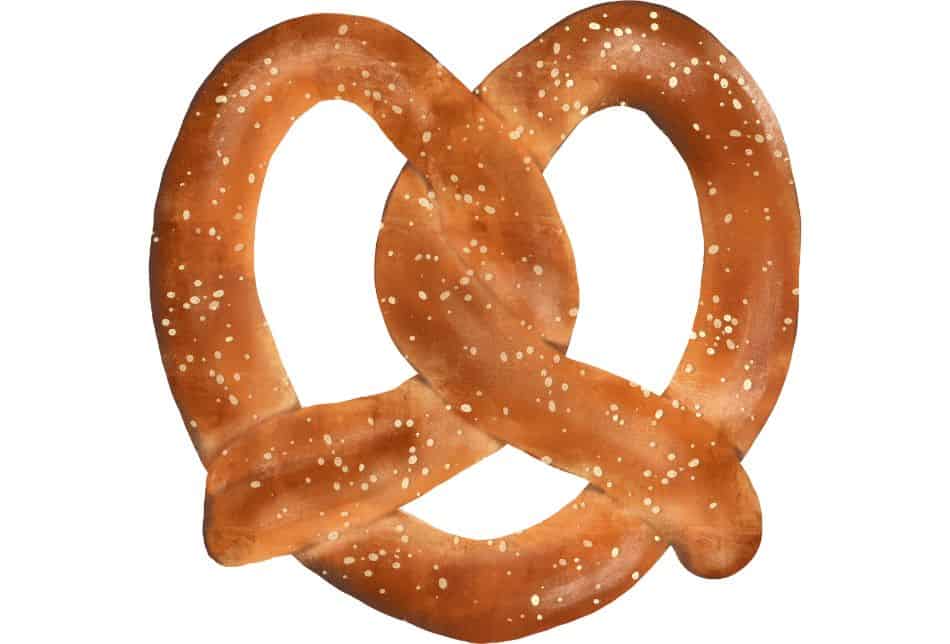
Today’s pretzels have a glossy brown surface owing to the spraying of sodium hydroxide, often known as lye, in a solution that ranges from 1 to 2%.
Pretzels are supposed to have originated in Europe, with the first recorded mention of them dating back to 610 AD.
Pretzels are a source of nutrients like riboflavin, selenium, thiamine, zinc, fiber, sodium, copper, folate, iron, and niacin.
Fact: It is believed that pretzels were originally created by monks in the shape of a child’s arms crossed in prayer.
36. Pumpernickel
Pumpernickel is dense, hearty rye bread. It is subsequently low in gluten and high in fiber.
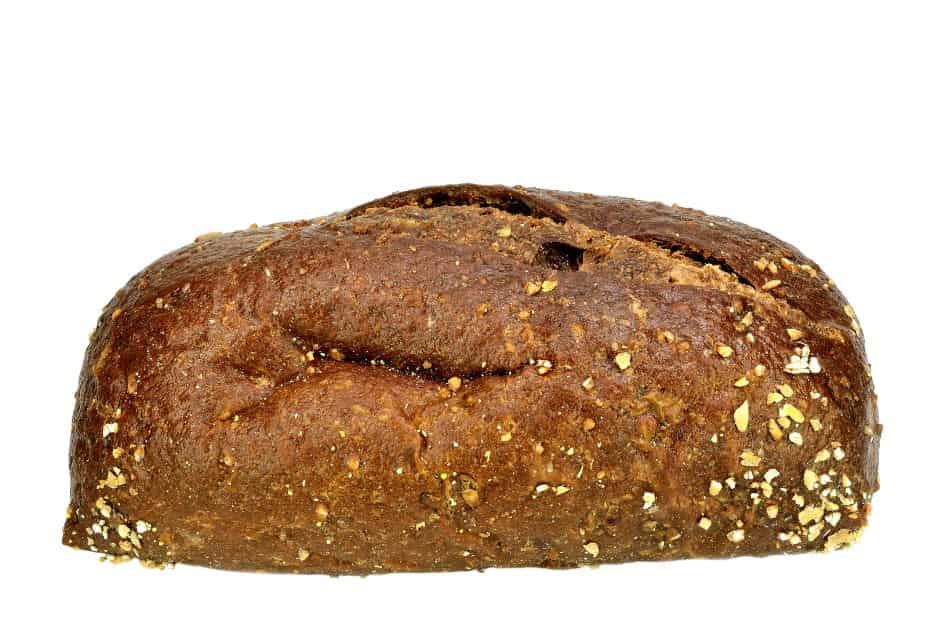
Pumpernickel has a heavy, coarse, dense texture and almost no crust. It is a very dark brown color, occasionally bordering on black. The flavor is mildly acidic and mildly sweet.
The first recorded mention of the pumpernickel was in 1450, in Westphalia in the North West of Germany.
Pumpernickel is a vital source of manganese, selenium, sodium, carbohydrate, iron, and essential vitamins like B1, B2, B3, B5, B6, and B9.
Fact: Pumpernickel is renowned for taking a very long time to bake, giving the bread its very dark hue.
37. Roasted Chicken
A classic dish that requires minimal to no effort—roasted chicken is an excellent source of protein.
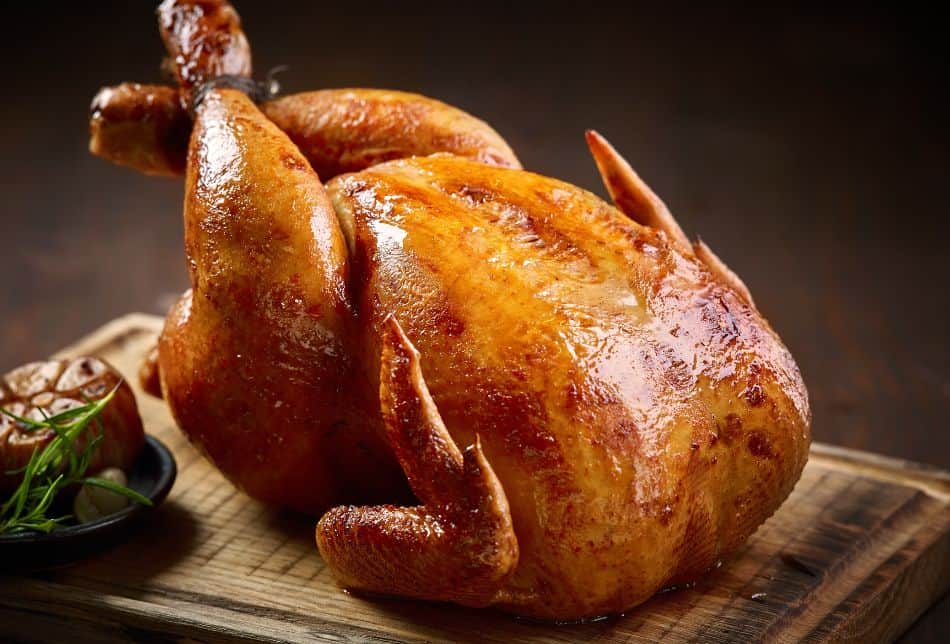
Roasted chicken is made by setting the oven at a higher heat setting, which helps achieve the chicken a crisp golden brown exterior.
The most used method is to roast the chicken in an oven, but it can also be cooked over a fire or with a rotisserie.
The origin of roasted chicken goes all the way back to 1950 and is believed to have originated in Germany.
You can enjoy roasted chicken on the side of a salad, plain brown rice, or baked potatoes and carrots.
38. Rye Crackers
Rye crackers are, as the name implies, crackers manufactured from rye flour. They carry a dark brown hue.
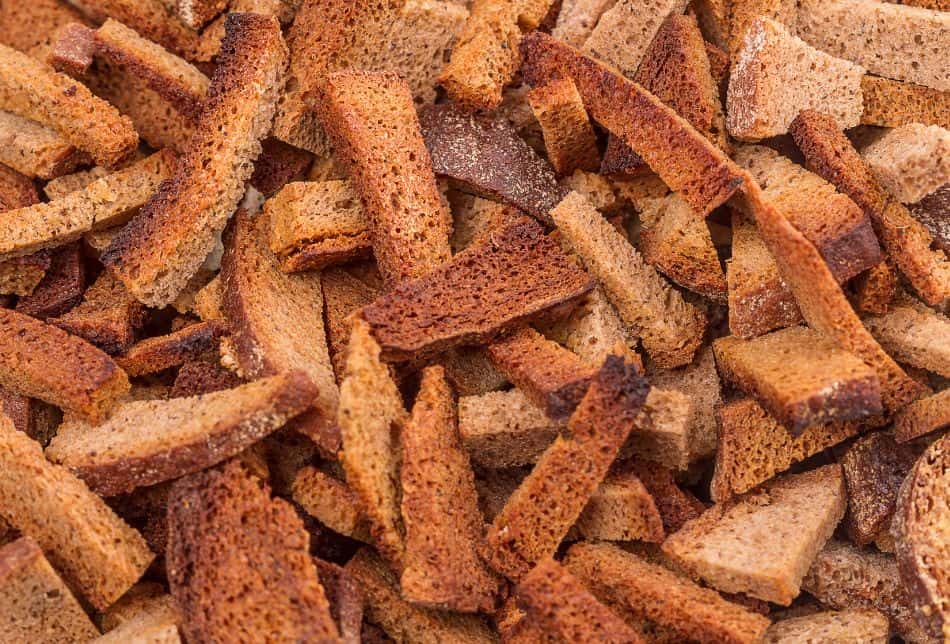
Known popularly as Swedish crispbread, initially, only rye flour, salt, and water were used to make them.
Since 500 AD, crispbread has been made in Sweden and Finland, originally as a means of preserving bread over the long winter.
Rye crackers are high in protein and nutritional fiber. Additionally, they are a wonderful source of selenium, potassium, calcium, iron, magnesium, and magnesium.
39. Soft Caramel
A kind of candy made by boiling sugar or syrup until it browns.

Soft caramels have a creamy, chewy texture that melts in your mouth and never sticks to your teeth. They can be consumed by themselves or dipped into chocolate.
The ingredients required to make soft caramels include heavy cream, sweetened condensed milk, light corn syrup, water, sugar, and unsalted butter.
The first softer, chewy caramel candy dates back to 1860 AD, when milk and fat were added to the boiling sugar water, beginning the history of soft caramel.
These candies contain nutrients like sodium, potassium, carbohydrates, and dietary fiber.
40. Soy Butter
Soy butter also called soy nut butter, is a mildly sweet spread.
It is a kind of nut butter created by roasting, crushing, and combining soybeans with soybean oil to create a spread with a firm texture and a mild nutty flavor.
The first commercial soy butter was made in 1929 by T.A Van Gundy at his La Sierra Industries in California.
All nine of the vital amino acids are present in soy butter at sufficient levels. In addition, it is a vital source of fiber, omega-3 fatty acids, vitamin B, calcium, iron, zinc, phosphorus, and magnesium.
41. Tea
Tea is a beverage made by steeping the dried leaves or buds of the Camellia sinensis plant in hot water.

Tea plants are native to East Asia, where they most likely first appeared in the southwest Chinese and northern Burmese borderlands.
Tea has reportedly been consumed in China since around 2700 BCE. When tea is brewed, certain tea leaves that are dark green almost seem brown.
Tea is a crucial source of several vitamins and minerals such as folate, niacin, calcium, zinc, potassium, pantothenate, manganese, and vitamins B1, B2, B6, and B12.
42. Toast
A breakfast staple, toast is the bread that has been browned by dry heat.

Toast can be made in a toaster, on a stovetop, or under a broiler. It is typically served with butter, jam, or honey.
The custom of toasting dates back to prehistoric Georgia. In a 1430 recipe for Oyle Soppys, toast is mentioned for the first time in writing.
Toast provides you with some vital vitamins and minerals, such as dietary fiber, vitamin A, C, sodium, potassium, protein, calcium, and iron,
Fact: Toast is sometimes eaten with a topping of hot cheese sauce. This dish is called Welsh rarebit.
43. Turkey
Turkey is a typically roasted bird that makes an excellent main course for holiday meals and family gatherings.

Turkey, most commonly consumed in the United States, is the domesticated descendant of the wild turkey, Meleagris gallopavo.
Turkey is native to the Americas. The meat of the turkey is always pink, even when the outside skin of the roasted turkey is golden brown.
Turkey provides you with plenty of nutrients like niacin, vitamin B6, B12, zinc, amino acid, and tryptophan.
Fact: Every Thanksgiving, 45 million turkeys are consumed.
44. Walnuts
Walnuts, as the name suggests, have a hard, woody brown shell that encases a thin skin. The flesh of the walnut is pale yellow.
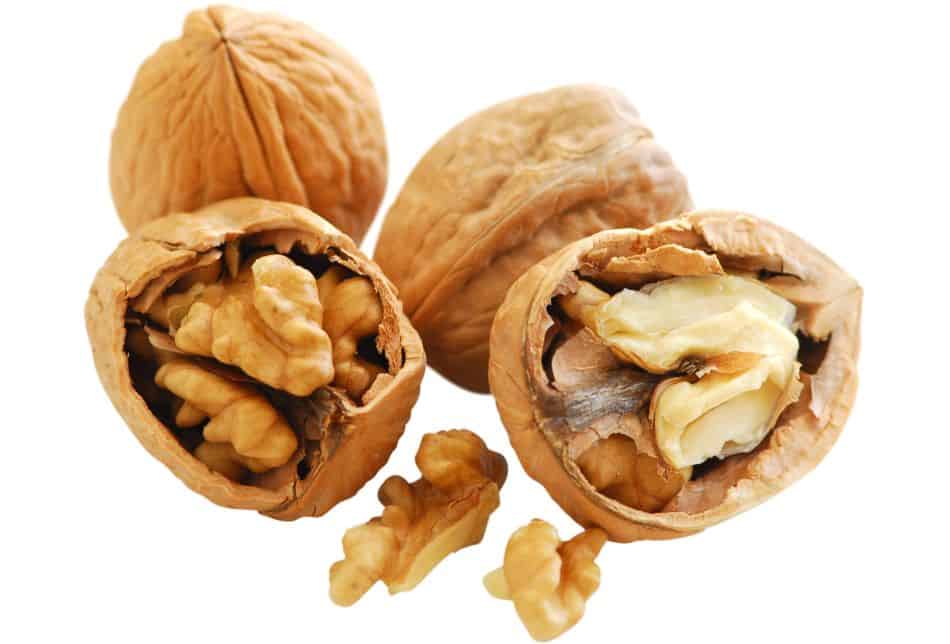
The earliest walnut remnants were found in Iraq and are thought to date back to 50,000 BC. They are native to southern Europe, Asia, West Indies, and North and South America.
Also known as Juglans regia, they are an excellent source of vitamins B9, B6, E, copper, folic acid, manganese, phosphorus, catechin, and melatonin.
Walnuts can be used to make walnut oil, which has a nutty flavor and can be used for cooking or as a dressing.
Fact: Although it is used as a “nut” in cooking and is referred to as such, it is not a true botanical nut.
45. White Coffee
This brown food item is for all caffeine lovers.
White coffee is coffee that’s only been roasted halfway through the roasting process. This results in a lower temperature and a lighter-colored bean.

The phrase “white coffee” comes from the exact translation of the beverage’s Chinese name, which Chinese immigrants first used in the 19th century.
Yemen is where the practice of making white coffee first began. They carry very nutty and sweet flavor notes, much different from traditional coffee.
White coffee is a great protein source and contains iron, sodium, vitamin A, and D.
46. Whole Wheat Pasta
Whole wheat pasta is obtained from whole wheat flour, as opposed to refined wheat flour.
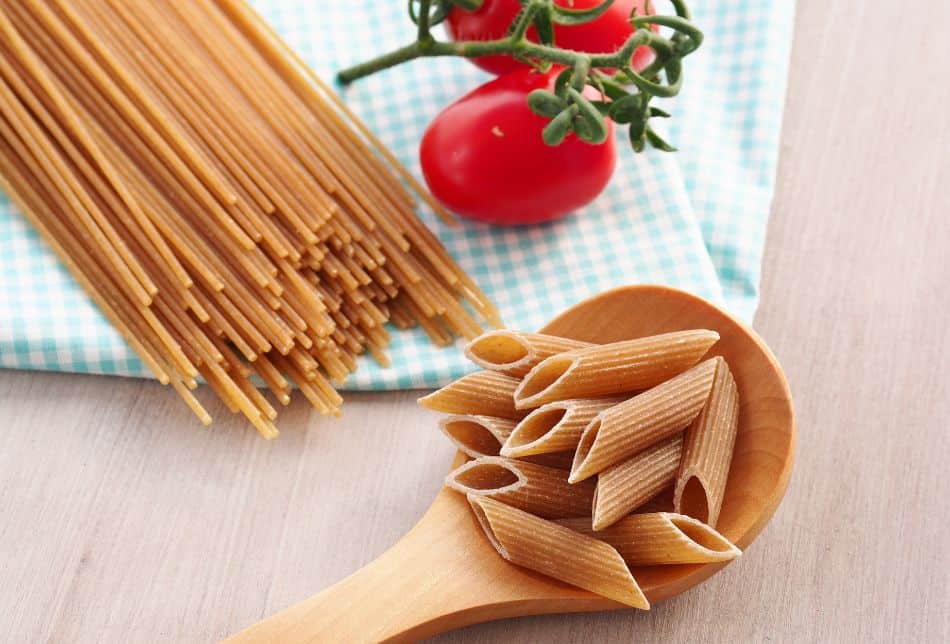
The Shang Dynasty in China is where whole wheat pasta’s ancient roots can be found, approximately around 1700-1100 BC.
Pasta made from whole-wheat flour has a rich brown color and higher nutritional value.
They contain vitamins and minerals such as protein, fiber, iron, magnesium, zinc, phosphorus, manganese, and selenium.
47. Yam
Last but not least on the list of brown food items is yam.
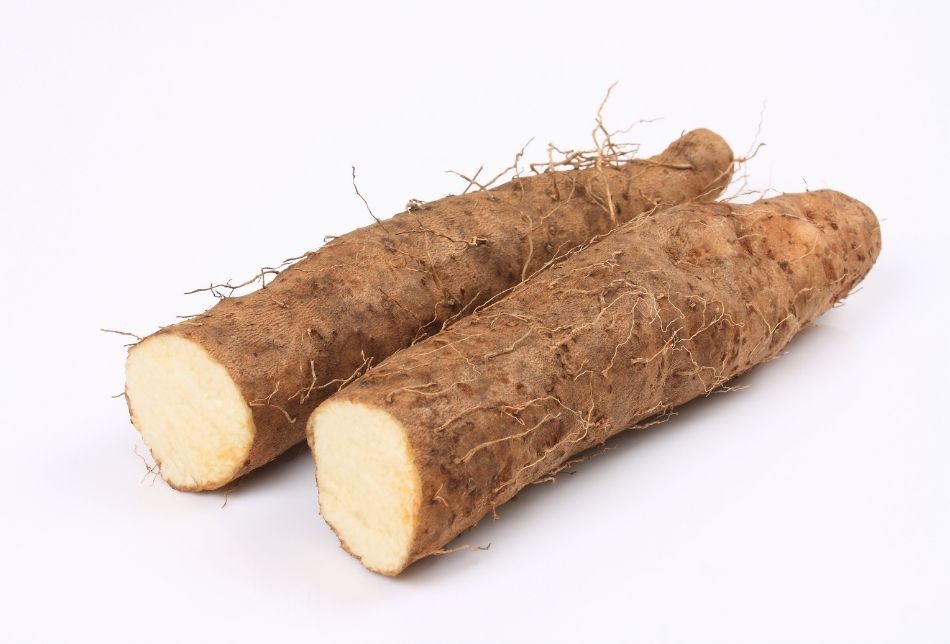
A yam is a starchy, tuberous crop. The word “yam” comes from the African word nyami, which means “to eat.”
Yams belong to the Dioscoreaceae family, which has its own unique genus called Dioscorea. They are native to the Caribbean, Asia, and Africa.
Yams are cylindrical in shape and feature white, purple, or reddish flesh beneath their blackish or brown skin.
Yams are a vital source of dietary fiber, vitamins A, E, and C, and minerals such as manganese, zinc, phosphorus, iron, calcium, and potassium.
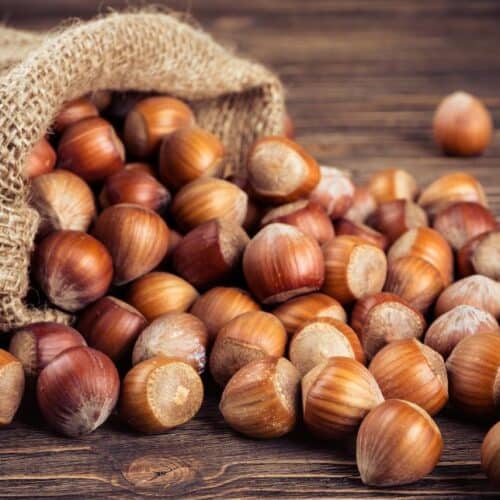
Foods That Are Brown In Color
Ingredients
- Almonds
- Almond Butter
- Baked Beans
- Brown Bread
- Brown Egg
- Brownies
- Brown Mushrooms
- Brown Rice
- Brown RaisChestnutsins
- Brown Sugar
- Caramel Corn
- Caramel Pudding
- Chestnuts
- Chickpeas
- Chocolate
- Chocolate Cake
- Chocolate Ice Cream
- Cinnamon
- Coffee Beans
- Cookies
- Cooked Meat
- Dates
- Fenugreek Seeds
- Flaxseeds
- Fudge
- Ginger
- Hazelnuts
- Lentils
- Maple Syrup
- Molasses
- Molasses Cookies
- Peanut Butter
- Pecan
- Potatoes
- Pretzels
- Pumpernickel
- Roasted Chicken
- Rye Crackers
- Soft Caramel
- Soy Butter
- Tea
- Toast
- Turkey
- Walnuts
- White Coffee
- Whole Wheat Pasta
- Yam

